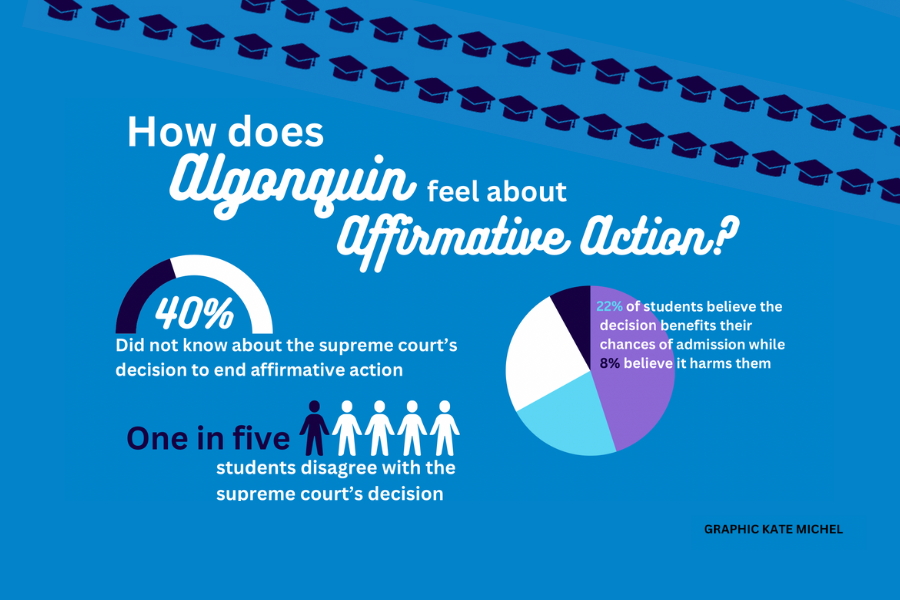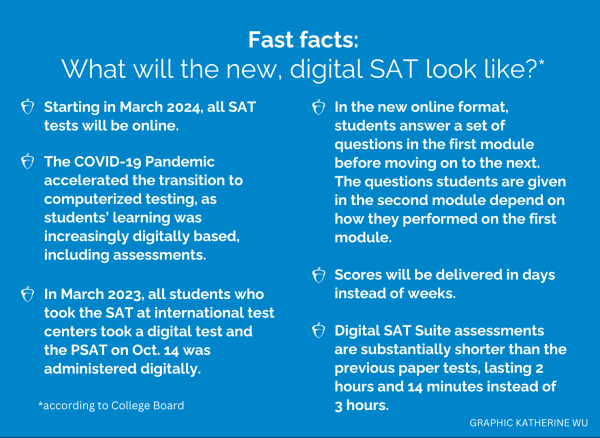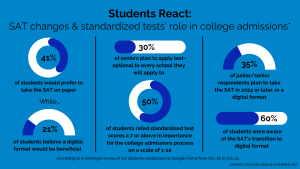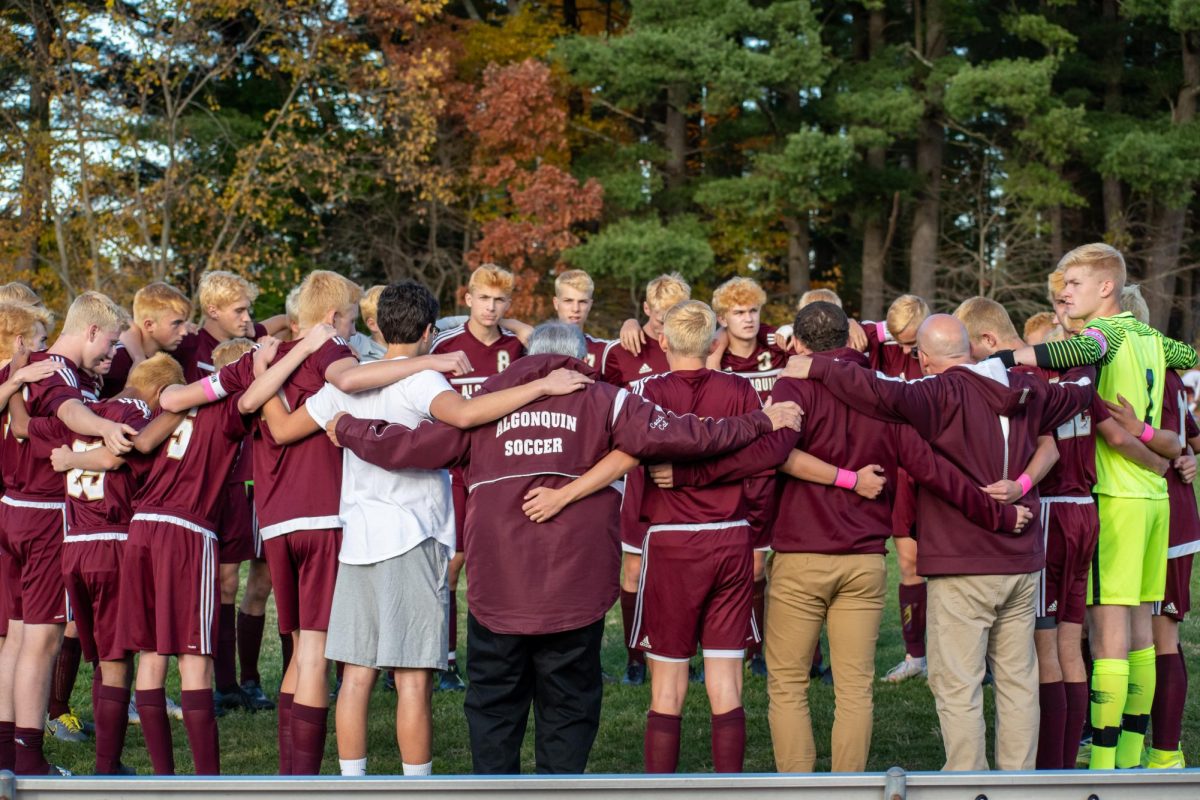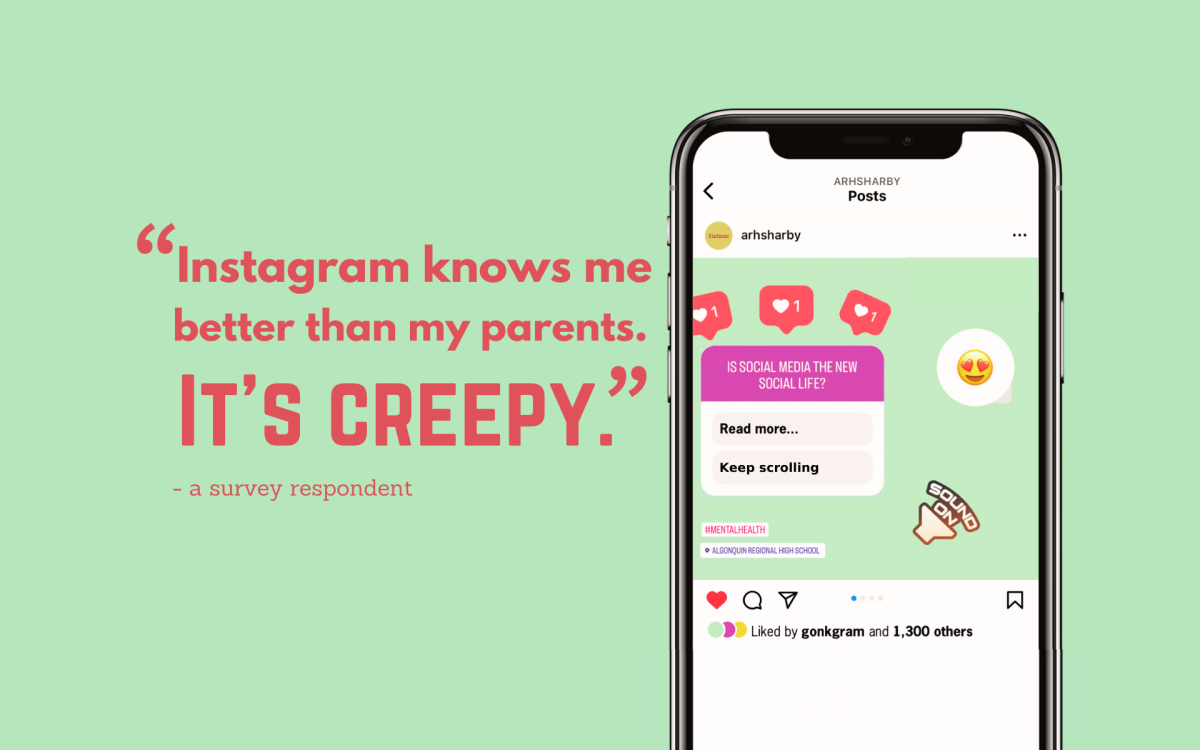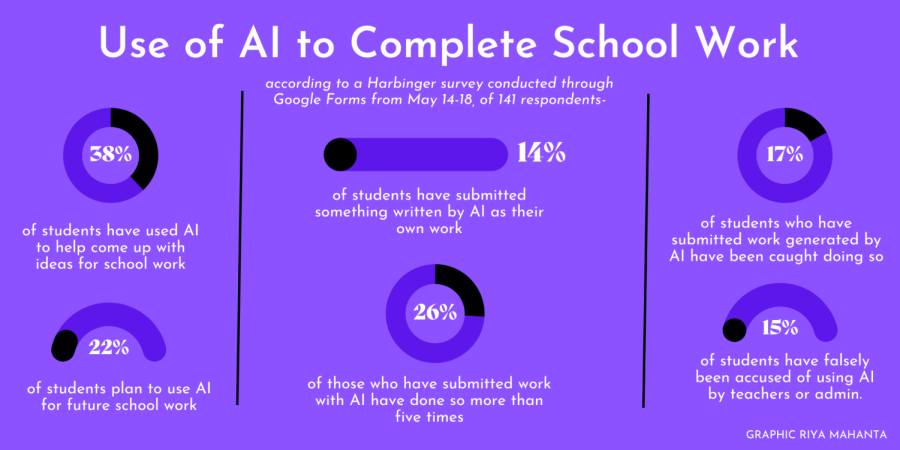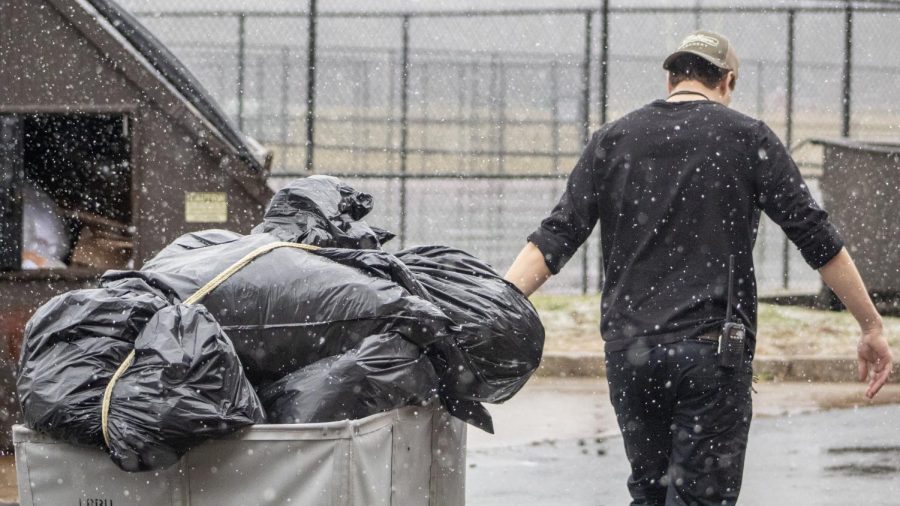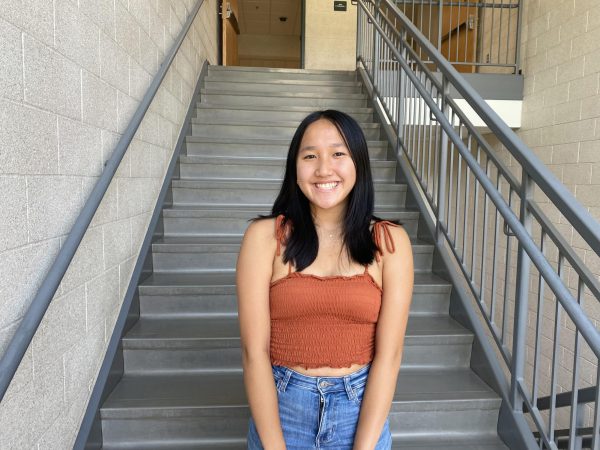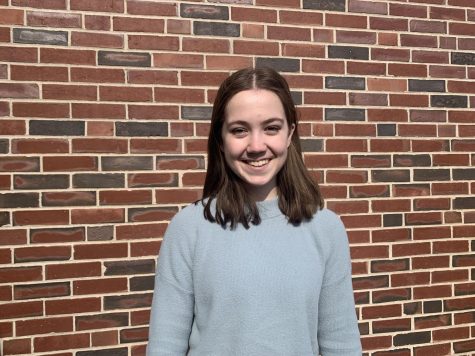Since the late 1960s, in a practice known as affirmative action, many colleges used an applicant’s race as a factor in their admissions decisions in an effort to increase diversity and combat historical racial discrimination. However, after the Supreme Court’s June 2023 rulings in two cases, this practice is no longer allowed and students are left wondering how the decision will impact their admissions.
Affirmative action was officially declared unconstitutional by the Supreme Court on June 29 with votes of 6-2 and 6-3 in two lawsuits filed by the organization Students for Fair Admissions (SFFA), one against Harvard College and the other against the University of North Carolina (UNC). SFFA is a legal advocacy organization founded by conservative activist Edward Blum to challenge affirmative action admissions policies. The organization’s homepage states they have the goal of restoring “colorblind principles” to college admissions. SFFA claimed that the Harvard and UNC admissions processes violated Title VI of the Civil Rights Act of 1964 and the Equal Protection Clause of the Fourteenth Amendment.
Harvard and UNC’s admissions programs were found by conservative members of the court Chief Justice John Roberts and Justices Neil Gorsuch, Clarence Thomas, Samuel Alito, Brett Kavanaugh and Amy Coney Barrett to violate the Equal Protection Clause of the Fourteenth Amendment in particular. The clause holds that states cannot deny any person equal protection of the laws, including on the basis of race or color.
The Students for Fair Admissions, Inc. v. President and Fellows of Harvard College and Students for Fair Admissions, Inc. v. University of North Carolina et al. court syllabus describes Harvard and UNC’s previous admissions processes. The syllabus states that race was a determinative factor for a significant percentage of Black and Hispanic students at Harvard and that UNC application readers were required to consider an applicant’s race and encouraged to provide applicants a “plus” based on their race.
According to page 40 of the Students For Fair Admissions, Inc v. President and Fellows of Harvard College Opinion of the Court, authored by Justice Roberts, “Many universities have for too long wrongly concluded that the touchstone of an individual’s identity is not challenges bested, skills built or lessons learned, but the color of their skin. This Nation’s constitutional history does not tolerate that choice.”
Liberal Justices Sonia Sotomayor and Elena Kagan dissented in both rulings and Justice Ketanji Jackson dissented in the case against UNC and did not participate in the decision of the case involving Harvard due to previously serving on one of the university’s governing boards. In her dissent, Sotomayor wrote, “The Court subverts the constitutional guarantee of equal protection by further entrenching racial inequality in education, the very foundation of our democratic government and pluralistic society.”
A majority of Algonquin students pursue higher education after high school; 82% of the Class of 2022 attended a four-year college upon graduation, according to the Massachusetts Department of Elementary and Secondary Education (DESE) school profile of ARHS. The school profile identifies that during the 2022-2023 school year, 69.6% of ARHS students were white, with 14.7% of students identifying as Asian, 9% identifying as Hispanic, 1.6% identifying as Black and 4.5% identifying as mixed. Many Algonquin students, no matter their race, wonder how this recent ruling will affect their college admissions chances.
Colleges Adapt
Following the Supreme Court rulings, many colleges released statements as they adjusted policies to comply with the decision.
According to Head of Guidance Lisa Connery, there are many ways colleges can increase diversity without asking for an applicant’s race.
“Affirmative action was an important tool, though one of many, that universities and colleges could use to increase opportunities for applicants and build diverse learning communities,” Connery said via email. “Colleges and universities are working to understand how the ruling will impact their practices while reaffirming their commitment to sustaining diverse communities.”
One such adaptation is including a question in applications asking about how a student’s background makes them unique. Page eight of the Supreme Court case syllabus notes that “nothing prohibits universities from considering an applicant’s discussion of how race affected the applicant’s life, so long as that discussion is concretely tied to a quality of character or unique ability that the particular applicant can contribute to the university.”
Boston University (BU) is one of the many institutions that has adapted to the ruling while choosing to place emphasis on diversity and applicants’ life experiences as a whole.
“People said they were disappointed, but the university will comply with the law and that means race will not be a factor in admissions,” BU Executive Director of Media Relations Colin Riley said. “But, there are multiple elements beyond the academic transcript. You’re getting recommendations from the teacher and counselor. You’re looking at if students offer standardized test scores, and if not, that’s fine because that’s optional at BU currently. Also, there’s an essay to see how the student addresses one of the two questions that are available to them.”
The U.S. Department of Education’s Office for Civil Rights and the U.S. Department of Justice’s Civil Rights Division jointly released two resources on August 14, a “Dear Colleague” letter and a Q&A document, to help colleges and universities find ways to embrace diversity without affirmative action.
One suggested change for colleges is partnerships with high schools with fewer resources, which tend to have larger racial minority populations.
“By partnering with school districts in underserved communities, supporting improved access to high-quality advanced courses, and investing time and resources into programs that identify and nurture students’ potential, colleges and universities can ensure that more students will be prepared to apply to colleges and universities, gain admission, succeed and graduate,” the Dear Colleague letter reads.
In addition to these partnerships, increasing financial aid for low-income students is another way colleges strive to bring more diversity to campus.
“Carolina will provide free tuition and required fees for incoming undergraduates from North Carolina whose families make less than $80,000 per year,” UNC Chancellor Kevin Guskiewicz wrote in a statement released on July 7.
Riley believes BU and other universities still can find ways to promote diversity without affirmative action.
“Diversity is more than what most people see it as,” Riley said. “It is geographical. It’s cultural. What we’re trying to find is those students who have been involved in their community, who have had an impact in their schools and in their communities.”
Students React
The court’s decision has led to mixed responses among ARHS students, with many feeling indifferent or unsure of how to react.
According to a Harbinger survey of 125 students conducted via Google Forms from Oct. 18 to Oct. 22, 50% of respondents were unsure whether or not they agreed with the Supreme Court decision. Of the remaining 50% of respondents, 20% disagreed with the decision, and 30% agreed with it.
Senior Michael Mesidor, who is African-American, initially disagreed with the Supreme Court decision but now sees both sides of the argument and hopes for common ground between the two views.
“I think [colleges] could just restructure affirmative action,” Mesidor said. “I think they’re focusing too much on the race rather than the actual potential of the people. They should find a balance of the students’ potential. I think this decision will impact me because I know that people have different backgrounds [and opportunities].”
A white freshman, who chose to remain anonymous, agrees with the Supreme Court rulings.
“You’re giving some people of diversity a good chance, but you’re also giving other people of diversity less of a chance compared to the others,” he said. “[Affirmative action]’s imbalanced and it doesn’t do its purpose.”
He believes the court’s decision will benefit him.
“If the ruling stays until the time I go into college, then it will impact me by giving me a better chance than I did before because of statistics and provide me somewhat of an equal chance of getting into college,” he said.
One reason why some students disagree with the Supreme Court decision is because they believe affirmative action helps even out the playing field.
“Affirmative action allows those who lived their lives without privileged situations to stand a chance against others during the college admissions process,” one survey respondent, who disagrees with the Supreme Court, wrote.
Other respondents who disagree with the rulings believe affirmative action is necessary for optimal campus environments.
“I think affirmative action was a crucial part of the admissions process because of its ability to create more diverse universities and colleges,” another respondent wrote.
Yet, other students believe affirmative action leads to further divides once students are accepted into college.
“Students that were preferably treated during the admission process may struggle to keep up academically with other higher qualified individuals, leading to higher dropout rates,” another survey respondent, who agrees with the Supreme Court, wrote. “Affirmative action also suggests that certain minority groups may only succeed when given preferential treatment, stigmatizing all achievements accomplished.”
Another aspect of affirmative action the Supreme Court brought up as problematic is that racial categories were often ambiguous.
On page 25 of the Opinion of the Court, Justice Roberts writes, “To achieve the educational benefits of diversity, respondents measure the racial composition of their classes using racial categories that are plainly overbroad (expressing, for example, no concern whether South Asian or East Asian students are adequately represented as ‘Asian’); arbitrary or undefined (the use of the category ‘Hispanic’); or underinclusive (no category at all for Middle Eastern students).”
Junior Alex Karasoulos is half Greek and half Brazilian and has found filling in her race on applications difficult at times.
“When it comes to applying for certain things, I am sometimes seen as Caucasian or Latino; it’s skewed one way or the other,” Karasoulos said. “It’s confusing sometimes because it only allows one thing to be selected. I feel like it’s boxing in mixed races [in applications].”
Junior Srikari Vissa, who is South Asian, agrees with the Supreme Court’s decision.
“I don’t think that [race] should be a huge factor in what [colleges] are doing,” Vissa said. “Instead, it should be people who fit into the university’s values and who will do well.”
Vissa also feels that more needs to be done regarding legacy admissions, which is when applicants receive a boost in admissions chances due to being a relative of an alumni or current student at that university.
“I think the next step should be getting rid of legacy admissions because I think it also plays a big role in rejecting a lot of kids who could get in,” Vissa said.
South Asian sophomore Tanmay Darji believes the idea behind affirmative action was well-intentioned but that it was executed poorly.
“I think affirmative action is great and all, but the reason it was implemented was because [admissions] weren’t very diverse; I feel like you can’t fight racism with racism,” Darji said.
Vissa believes the Supreme Court’s decision on affirmative action might impact her, but, like many students, is not exactly sure how.
“I think this decision might impact me because I don’t know how I feel about my chances of getting into a very good university, but I think maybe I could meet the guidelines [colleges] had for their students,” Vissa said.
Connery assures students that colleges will still emphasize diversity.
“As a department we received a multitude of emails from colleges and universities, after the ruling, reaffirming their commitment to inclusion and diversity,” Connery said. “They respect, appreciate and value all individuals and the impact they can have on a community. Across the country, schools remain committed to inclusive and diverse campuses.”
Ultimately, Riley hopes students stay calm during the college application process amidst the change, and trust the process.
“There’s no need to be stressed,” Riley said. “There’s lots of opportunities.”
SAT goes digital, loses relevance in admissions
The OG of standardized tests is changing in attempts to catch up with the times and become relevant again.
Only a few years ago the SAT was an iconic rite of passage. Now, the College Board has decided it’s time to drastically change.
More and more colleges and universities are becoming test-optional, where applicants can choose whether to include their standardized test scores in their application, or even test-blind, where scores won’t be considered as part of the application evaluation whether or not a student submits them.
Now even those students who wish to take and submit test scores to schools will face a new change. The SAT is going completely digital.
Both factors raise the question of whether or not taking standardized tests is the right decision for students.



